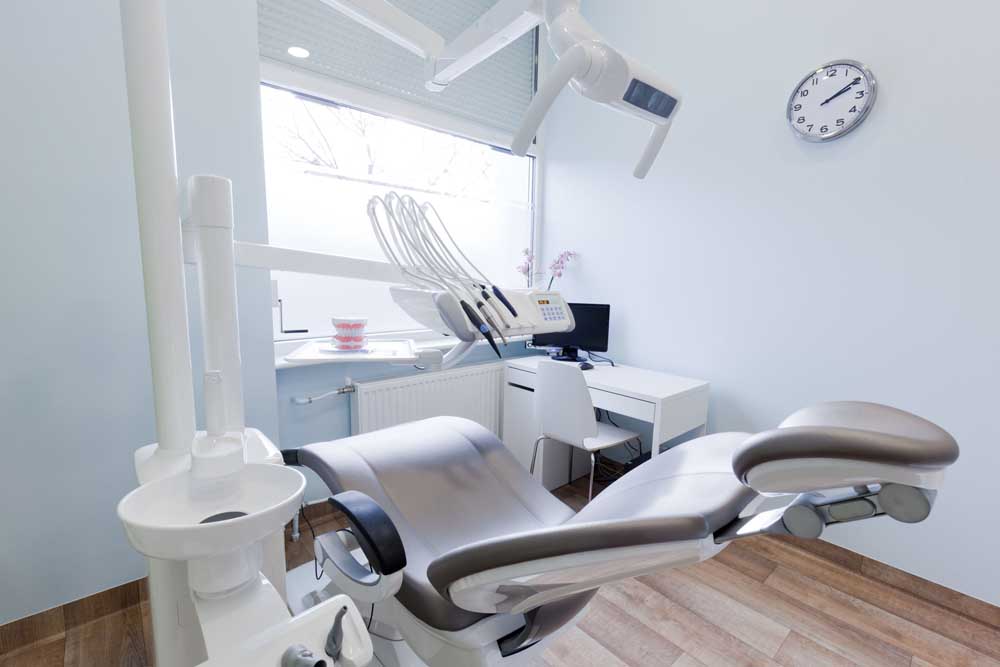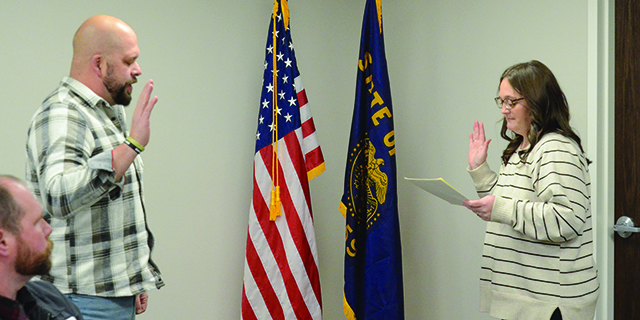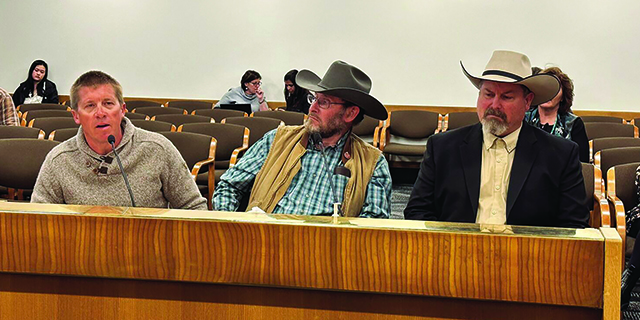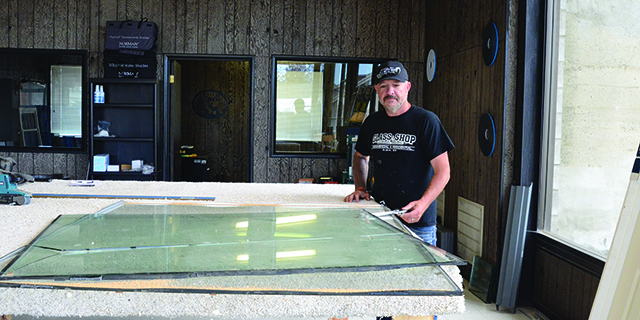Guidelines limit dental pain meds
Published 12:00 am Wednesday, April 11, 2018

- (123rf)
New prescribing guidelines for dentists call for more judicious use of opioid pain relievers to reduce the risk of patients becoming addicted. But dentists face a tremendous hurdle in cutting back on prescribing: convincing patients in fear of dental pain to go without.
The guidelines are an important change, dentists say. While the vast majority of opioids are prescribed by doctors, patients often get their first exposure after a dental procedure.
Trending
“We hear a lot of patients asking for pain meds right off the bat,” said Dr. Brad Hester, a Bend dentist and member of the Oregon Dental Association’s board of trustees. “So it’s going to take a different mindset, and some re-education and reassuring patients that we can manage a lot of this pain with something that’s not an opioid.”
Guidelines issued last month by the American Dental Association call for limiting opioid prescriptions after a dental procedure to no more than seven days, and for dentists to consult prescription drug monitoring program databases to ensure patients haven’t been prescribed opioids by another provider. The guidelines generally line up with last year’s recommendations from the Oregon Health Authority, which suggests limiting scripts to just 3 days or 10 tablets. Both guidelines recommend starting with a combination of ibuprofen and acetaminophen for anything less than severe pain, and not refilling opioid prescriptions by phone.
Prescription opioids, such as OxyContin, oxycodone or hydrocodone, carry a risk of addiction, and overprescribing of such drugs has been a key factor in an epidemic of overdose deaths in the U.S. over the past decade.
According to a 2015 analysis in the American Journal of Preventive Medicine, dentists accounted for about 6.4 percent of all U.S. opioid prescriptions in 2012, down from 15.5 percent in 1998. But that percentage dropped mainly because doctors prescribed so many more opioids.
According to Truven Health, dentists wrote 147 opioid prescriptions for every 1,000 privately insured patients in 2015, up from 131 per 1,000 in 2010.
“I naively thought that I wasn’t really part of the problem. I was just giving the prescriptions once or twice at the most to a patient with an acute issue, and it’s usually just for a few days or a week at the most,” said Dr. Bruce Austin, a practicing dentist for 30 years and state dental director for the Oregon Health Authority. “What we learned in the last year, dentists really are a big part of the issue because acute prescribing can be for many people their first exposure to narcotics.”
Trending
Dentists are the most common prescriber of opioids to the 10-to-19 age group, often after a procedure to remove third molars, commonly known as wisdom teeth.
“The brain doesn’t mature completely until age 25,” Austin said. “And that’s just about the age range for wisdom teeth. Because if you don’t get them out by their early 20s, they get much more difficult.”
Studies suggest that adolescents exposed to opioids, even for just a day or two, have a 33 percent higher risk of nonmedical use of prescription painkillers sometime in the future.
“Every day of exposure to narcotics, the risk of future problems increases,” Austin said. “So it’s important to either eliminate or delay that first exposure to narcotics.”
Jessica Henderson, a dentist with Contemporary Family Dentistry in Bend, says after working with underprivileged kids and seeing how often they struggled with addiction, she simply won’t prescribe narcotics to any patient under 18.
“I don’t care what they’ve had done — it’s not OK. Their young minds are too vulnerable,” she said. “I guard that prescription pad with my life; it’s too big of a problem.”
She will prescribe opioids to older patients if needed but generally won’t give them more than 12 pills, about a three-day supply.
“In a way we are still in a customer-service business,” Henderson said, “and that makes it really confusing.”
Most dental patients do fine with either prescription or over-the-counter anti-inflammatory medications such as ibuprofen. And studies suggest the combination of ibuprofen and acetaminophen is as effective as treating moderate to severe dental pain as opioids.
“But patients often don’t understand that and think that we are shortchanging them if we don’t give them something high-powered,” said Gary Allen, vice president of dental services for Redmond-based Advantage Dental. He’s seen a significant drop in the average number of opioid pills being prescribed by the dental network’s 370 employed or contract dentists serving Oregon Health Plan members.
“Some of us older dentists like myself were taught how to manage acute pain with opioids, and so we’re now making that transition,” he said.
Dr. Keith Krueger, an oral and maxillofacial surgeon in Bend, says that patients heal best if they’re not suffering through pain after their procedures. He often starts patients on anti-inflammatories but will write a short-term prescription for an opioid with no refills that the patient can fill if needed.
“The other part we really reinforce for that immediate recovery time from surgery is a lot can be mediated (by) following instructions of resting, ice, elevation, good hydration and good nutrition,” he said. “That first 48 to 72 hours of recovery make a big difference, so we really are very specific as to what we want them to do afterwards that helps really minimize pain.”
Hester, the Bend dentist, says it should be pretty easy to follow the new recommendation for no more than seven days of opioids for an acute pain issue.
“There are times, though, when the patient’s pain or the ability to tolerate pain is not quite as high, and we do need to go beyond that,” he said. “I think the challenge is really to kind of get the mindset off of prescribing opioids as a firsthand first-level pain controller.”
Dentists can also use longer-lasting anesthetic that numbs the pain for the first six to 12 hours, which often gets patients through the worst of their recovery. If patients need additional relief, most aren’t shy about calling.
“When people are in pain,” Hester said, “they definitely let you know.”
Starting with a short prescription and adding pills as needed also reduces the risk of leftover pills being diverted for misuse.
In 2016, researchers from the University of Pennsylvania surveyed patients after wisdom teeth extractions, and found that their acute pain tended to peak within 24 hours to 48 hours and then come down into the moderate pain range where it could be handled by over the counter medications. Patients who didn’t have post-surgical complications received, on average, 28 opioid pills from their dentists, but three weeks following their surgery had used only 13. Only 6 percent of patients used all of their pills.
While the dental guidelines are voluntary, state dental boards often use such guidance from professional organizations to determine whether dentists are practicing within the standard of care. Some states have passed legislation to limit the duration of initial opioid prescriptions, but Oregon lawmakers rejected such proposals in the past.
Last year, however, Oregon legislators mandated that all providers with a license to prescribe controlled substances register with the state’s prescription drug monitoring program. Currently only about a third of dentists in the state are registered, and according to the Oregon Health Authority, just a small percentage regularly check the database before prescribing.
Not all dentists, particularly pediatric dentists or orthodontists, prescribe narcotics. More widespread use of the database could prevent prescribing additional opioids to patients who may already be taking painkillers for chronic pain or who have prescriptions for a benzodiazepine, such as Ativan or Xanax. Combining opioids and benzodiazepines markedly increases the risk of overdose.
“A lot of prescribing has kind of come from tradition,” Austin said. “Providers expect patients to ask, and providers kind of routinely prescribe, especially nowadays because they don’t want negative reviews online.”
Dentists are also acutely aware that many patients have dental phobias, and any hint that they won’t get adequate pain relief could keep them out of the dental chair.
“Anxiety or fear of dentistry is a big part of dentistry that a lot of young dental students don’t understand, and it wears on a provider over the years,” Austin said. “We have had the tradition of rubber stamping prescriptions in the past. We trying to work to help prescribers and patients to understand it may not be necessary.”
—Reporter: 541-633-2162, mhawryluk@bendbulletin.com









